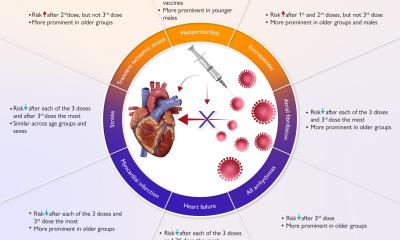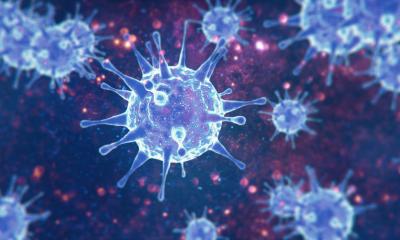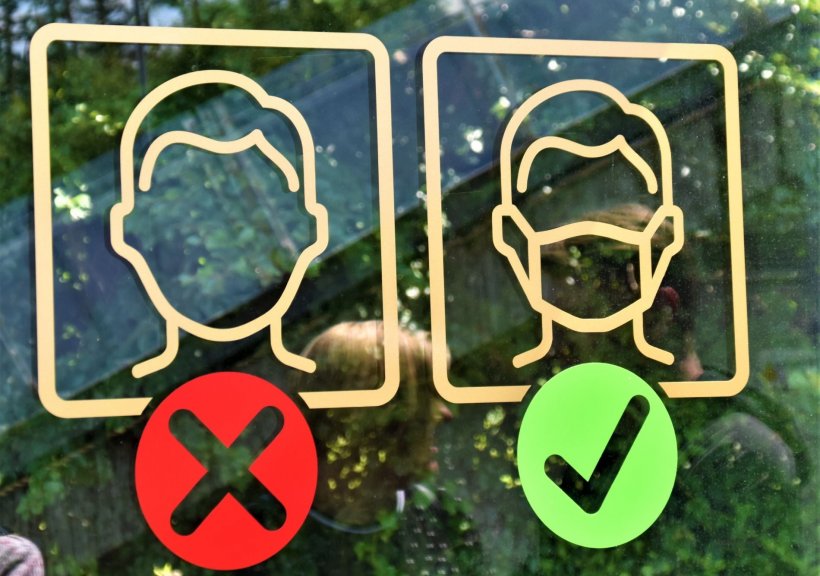
Image source: Unsplash/Waldemar Brandt
News • Expert debate on coronavirus protection
Covid-19: The pros and cons of wearing masks outdoors
Wearing face coverings outside should be normalised because it may reduce transmission of SARS-CoV-2 in some situations—and may encourage mask wearing indoors, where risks are greater—say Babak Javid, Dirk Bassler, and Manuel B Bryant. But Muge Cevik, Zeynep Tufekci, and Stefan Baral argue that outdoor transmission contributes very little to overall infection rates and that efforts should focus on reducing indoor transmission.
Yes—Babak Javid, Dirk Bassler, Manuel B Bryant
The likelihood of transmission of SARS-CoV-2 is far greater indoors than outdoors.1,2 So why do we argue here that masks, in some circumstances, should also be worn outdoors?
To be clear, we are not arguing that outdoor transmission represents a large transmission risk. Nor do we support policies that, for example, mandate masking outdoors when someone is alone or only with members of one household, since such scenarios, by definition, do not represent a transmission risk. Instead, we argue for a nuanced approach to mask wearing, where even outdoor mask wearing during the pandemic phase of Covid-19 is a normalised behaviour rather than a polarising one.
Estimates of indoor transmission risks compared with outdoors vary widely, but they are at least 4-20 times more likely than outdoors.2 Infection with SARS-CoV-2 is likely to depend on the amount of inoculated infective particles, which in turn mainly depends on two factors: the concentration of SARS-CoV-2 in the air and the duration of exposure.3 Situations where more infectious people share air with less dilution (wind and movement) for a prolonged time—such as in crowds and while queuing—will carry some risk of transmission, although this risk is lower than indoors because of the much higher and rapid dilution outdoors and the lack of accumulation.4
Recommended article

News • Coronavirus transmission
Experts: Covid-19 prevention efforts should focus on airborne transmission
Any future attempts to reduce the spread of Covid-19 should be focused on tackling close airborne transmission of the virus which is considered to be the primary route for its circulation, according to experts. Respiratory experts argue that it is now clear that SARS-CoV-2 is most likely to transmit between people at close range through inhalation rather than through contact with surfaces or…
Interventions and mandates
People in some “outdoor” occupations, such as agricultural workers, have displayed a substantially increased risk of Covid-19,5 but scrutiny suggests that these risks may have been due to cramped shared sleeping arrangements rather than outdoor transmission itself.2 “Superspreading events,” which have an outsized effect on transmission due to over-dispersion,6 have also primarily, but not exclusively, occurred in indoor settings.7
Summer 2020 witnessed worldwide mass protests in support of the Black Lives Matter movement. At the time, many experts and pundits warned that such protests may fuel large transmission clusters for covid-19, but these fears were not realised.8 By contrast, the mass outdoor Sturgis Motorcycle Rally in South Dakota, USA, is considered to have been the trigger for a huge superspreading-type event that resulted in a devastating chain of Covid-19 transmission and disease.9 One proposed reason for the observed differences is that the Sturgis Rally was associated with lower compliance with non-pharmaceutical interventions (NPIs), such as mask wearing and physical distancing, that are associated with decreased transmission risk. Observational data showed that attendees from regions with stricter NPI mandates were associated with lower onward transmission risk than attendees with weaker such mandates.9
Nonetheless, mask wearing by the public, particularly outdoors, remains controversial.10 One of the authors, Babak Javid, lives in the San Francisco Bay Area, which implemented one of the earliest and strictest public mask mandates, and it has shown the lowest mortality risk from Covid-19 of any large city in the US.11 In this region, wearing masks outdoors is mandated if you encounter people from outside of your household. Importantly, such a mandate is associated with extremely high compliance with mask wearing not only outdoors but also indoors, where most transmission risk exists.11
Recommended article
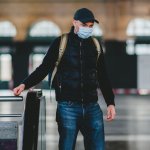
News • Under cover
Do masks give us a false sense of security? Probably not, says science
Existing limited evidence suggests that wearing face coverings to protect against COVID-19 does not lead to a false sense of security and is unlikely to increase the risk of infection through wearers foregoing other behaviours such as good hand hygiene, say researchers from the University of Cambridge and King’s College London.
Social norms
Regardless of the precise mechanisms of mitigation, observational data from the US and Germany have shown that regions with mask mandates have had a lower impact from SARS-CoV-2.12 Countries with early adoption of face coverings for the public also achieved an earlier acceptance of a social norm during the pandemic.13
In summary, we argue that wearing masks outdoors, particularly at large outdoor gatherings such as sporting events or other settings where it will be difficult to maintain physical distance for prolonged periods, which may have a low but measurable risk of seeding a superspreading event—as well as normalising mask wearing behaviour in general—will bring benefits in reducing risks during the pandemic phase of Covid-19.
No—Muge Cevik, Zeynep Tufekci, Stefan Baral
Outdoor transmission risk for SARS-CoV-2 is substantially lower than in indoor environments.14 Less than 10% of reported Covid-19 cases involve outdoor transmission, and those are typically associated with prolonged close interactions or settings where people mix both indoors and outdoors. Moreover, no confirmed sizeable Covid-19 clusters or “superspreader” events have been outdoors-only.2,14,15
While the Sturgis Rally in South Dakota or the Rose Garden outbreak at the White House are frequently cited as evidence for outdoor-only superspreading events, these events had sustained and multi-day indoor components. For instance, epidemiological investigation of the Sturgis Rally found cases linked to restaurants and workplaces.16
Consistent with the low concentration of SARS-CoV-2 in outdoor air due to natural ventilation, outdoor transmission contributes very little to Covid-19 epidemics.17
Regular mask wearing outdoors is often highlighted as an easy intervention to implement, supported by the precautionary principle. However, appropriate use of the precautionary principle necessitates an empirical assessment of benefits and costs.18 Moreover, more than a year into the Covid-19 pandemic, the precautionary principle can no longer be invoked as if there are no data on the mechanisms of transmission and the concentration of risks. Ultimately, the costs of policies aiming for regular mask use outdoors should be balanced against their limited benefits.
User costs
Engagement in public health interventions depends not on habituation of behaviour but on the level of people’s trust in policy makers and transparent public dialogue.19,20,21 Given the low risk of transmission outdoors, recommendations or mandates for outdoor masking may seem arbitrary, affecting people’s trust and sustained energy to engage in higher yield interventions,20,21 such as indoor mask use or staying home if sick.
Blanket outdoor mask recommendations may also confuse the public about the true nature of the relative risk and could distract from indoor settings with a much greater transmission risk.2,15 Therefore, the public should be informed about the evolving scientific understanding of transmission mechanisms and should be encouraged to be most vigilant in indoor settings, while noting that prolonged and close contact outdoors may pose a risk. In the UK, for instance, government messaging now encourages people to meet outdoors with no mask mandate.
Social isolation significantly contributes to morbidity and early mortality and has greater importance for health and wellbeing than is often perceived.22 Pandemic restrictions have already limited social connections, reducing morale, and an outdoor mask requirement might serve as a disincentive to be outdoors, which could worsen social isolation.23 It might also result in some people gathering indoors or refraining from exercise, a crucial component of mental and physical health. Therefore, focusing energy on preventing the vast majority of infections that occur indoors,2,15 while allowing the outdoors to be a place where people’s energy is recharged through fresh air, physical activity, and social connection, would pay great dividends from a public health perspective.24
Equity concerns are also vital, because people who have access to back gardens or can afford private transport to less population dense areas can enjoy the outdoors unmasked. In contrast, many others without such privileges or resources cannot enjoy fresh air or exercise unmasked in settings where mask use is universally mandated outdoors.
Recommended article
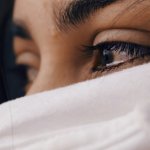
News • Prevalence of depression and anxiety
Covid-19 pandemic impacts mental health worldwide, study finds
A study conducted by Columbia University Mailman School of Public Health researchers reports a high global prevalence of both depression and anxiety during the Covid-19 pandemic. It also shows how the implementation of mitigation strategies including public transportation and school closures, and stay-at-home orders impacted such disorders. Results are published in Psychological Medicine.
System costs
From a systems perspective, all interventions have opportunity costs.25 The costs associated with implementing outdoor masking represent lost opportunities in supporting policies and programmes that could avert far more infections.
Some people may choose to wear masks outdoors because of personal preferences or individual needs, even without specific recommendations. While outdoor activities are low risk and outbreaks have not been observed even with intense public demonstrations, a higher risk may be associated with prolonged close interactions and adjacent activities such as public transport or car sharing, and this could be incorporated into the public health messaging. People make complex decisions about risks every day, and they should be informed and empowered to make the right decision for themselves on outdoor masking.8
Ultimately, outdoor mask mandates may be popular in some settings, as they are among the most “visible interventions” purporting to demonstrate decisive leadership. However, these mandates do little to tackle the critical transmission risks or to address outcomes of socioeconomic inequities and structural racism, driving a disproportionate number of the infections and consistent disparities observed worldwide.
References
- Leclerc QJ, Fuller NM, Knight LE, Funk S, Knight GM, CMMID COVID-19 Working Group: What settings have been linked to SARS-CoV-2 transmission clusters? Wellcome Open Res 2020;5:83.
- Bulfone TC, Malekinejad M, Rutherford GW, Razani N.: Outdoor transmission of SARS-CoV-2 and other respiratory viruses: a systematic review. J Infect Dis 2021;223:550-61.
- Nishiura H, Oshitani H, Kobayashi T, et al.: Closed environments facilitate secondary transmission of coronavirus disease 2019 (COVID-19). medRxiv 2020:2020.02.28.20029272.
- Scheuch G.: Breathing is enough: for the spread of influenza virus and SARS-CoV-2 by breathing only. J Aerosol Med Pulm Drug Deliv 2020;33:230-4.
- Waltenburg MA, Rose CE, Victoroff T, et al., CDC COVID-Emergency Response Team: Coronavirus disease among workers in food processing, food manufacturing, and agriculture workplaces. Emerg Infect Dis 2021;27.
- Wong F, Collins JJ: Evidence that coronavirus superspreading is fat-tailed. Proc Natl Acad Sci U S A 2020;117:29416-8.
- Liu Y, Eggo RM, Kucharski AJ: Secondary attack rate and superspreading events for SARS-CoV-2. Lancet 2020;395:e47.
- Neyman G, Dalsey W: Black Lives Matter protests and COVID-19 cases: relationship in two databases. J Public Health (Oxf) 2020;fdaa212.
- Dave D, McNichols D, Sabia JJ: The contagion externality of a superspreading event: The Sturgis Motorcycle Rally and COVID-19. South Econ J 2020.
- Bruine de Bruin W, Saw HW, Goldman DP: Political polarization in US residents’ COVID-19 risk perceptions, policy preferences, and protective behaviors. J Risk Uncertain 2020;1-18.
- Worden L, Wannier R, Blumberg S, et al.: Estimation of effects of contact tracing and mask adoption on COVID-19 transmission in San Francisco: a modeling study.medRxiv 2020:2020.06.09.20125831.
- Guy GP Jr., Lee FC, Sunshine G, et al., CDC COVID-19 Response Team, Mitigation Policy Analysis Unit, CDC Public Health Law Program: Association of state-issued mask mandates and allowing on-premises restaurant dining with county-level covid-19 case and death growth rates—United States, March 1-December 31, 2020. MMWR Morb Mortal Wkly Rep 2021;70:350-4.
- van der Westhuizen HM, Kotze K, Tonkin-Crine S, Gobat N, Greenhalgh T: Face coverings for covid-19: from medical intervention to social practice. BMJ2020;370:m3021.
- Scientific Advisory Group for Emergencies, Public Health England. PHE Transmission Group: Factors contributing to risk of SARS-CoV2 transmission in various settings, 26 November 2020. 18 Dec 2020.
- Weed M, Foad A. Rapid scoping review of evidence of outdoor transmission of covid-19. medRxiv 2020 [preprint].
- Firestone MJ, Wienkes H, Garfin J, et al.: Covid-19 outbreak associated with a 10-day motorcycle rally in a neighboring state—Minnesota, August-September 2020. MMWR Morb Mortal Wkly Rep 2020;69:1771-6.
- Belosi F, Conte M, Gianelle V, Santachiara G, Contini D: On the concentration of SARS-CoV-2 in outdoor air and the interaction with pre-existing atmospheric particles. Environ Res 2021;193:110603.
- European Parliament. The precautionary principle. 2015.
- Bargain O, Aminjovo U: Trust and compliance to public health policies in times of covid-19. J Publ Econ2020;192:104316.
- Blair RA, Morse BS, Tsai LL: Public health and public trust: Survey evidence from the Ebola Virus Disease epidemic in Liberia. Soc Sci Med 2017;172:89-97.
- Wynne B: Public engagement as a means of restoring public trust in science—hitting the notes, but missing the music? Comm Genet 2006;9:211-20.
- Holt-Lunstad J. Social isolation and health: health policy brief. Health Affairs 2020 Jun 22.
- Duffy B, Allington D. The accepting, the suffering and the resisting: the different reactions to life under lockdown. Policy Institute, King’s College London. 2020.
- Clair R, Gordon M, Kroon M, et al.: The effects of social isolation on well-being and life satisfaction during pandemic. Humanit Soc Sci Commun2021;8:28.
- Sekhon M, Cartwright M, Francis JJ: Acceptability of healthcare interventions: an overview of reviews and development of a theoretical framework. BMC Health Serv Res2017;17:88.
Source: BMJ
30.04.2021




